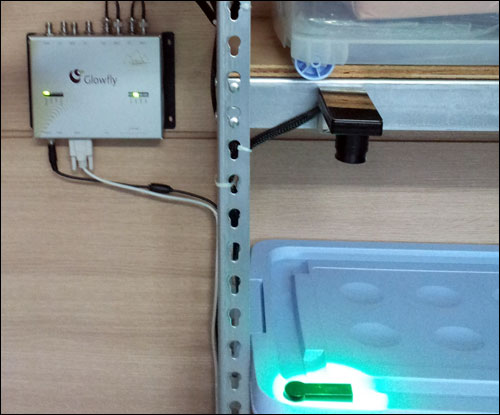Radio frequency identification technology is often touted for its ability to read tags without requiring a line-of-sight, thereby making reads much faster than, for example, scanning a bar code. There are also times, however, that non-line-of-sight reading creates problems. The unintended reading of RFID tags—also known as stray or collision reads—can cause data errors in a variety of applications. One application subject to such errors is a retail space in which only the tags of certain items in a dense environment should be read (such as those intended for loading at a specific dock door). Others include parallel conveyors, in which an interrogator may inadvertently capture the ID number of a tag on a different conveyor, or industrial or construction sites at which pinpointing a tag’s exact location is necessary to determine if a piece of machinery may need to be shut down for safety reasons.
One company working to create a solution to the stray-read problem is IDRO (Identification with Radio and Optical). Since its founding in 2008, the South Korean firm has been working to develop its Glowfly (Visible RFID) system, consisting of an RFID reader with an antenna that transmits not only an RF signal, but also a signal in the form of visible light. IDRO’s patented IDRO900V reader works in conjunction with an EPC Gen 2 battery-assisted passive RFID tag equipped with a photoelectric sensor. In order for IDRO’s Visible RFID tag to transmit its unique identifier, it must first detect the visible signal transmitted by a light-emitting diode (LED) built into the reader’s antenna. In that way, tags cannot be inadvertently interrogated if they fall outside of that light beam.

Traditionally, to avoid stray reads, users and installers often adjust a reader’s output power, as well as the positioning of antennas, in order to minimize the read area. But this practice, says Yanggi Kang, IDRO’s CEO, is time-consuming and error-prone.
IDRO’s ANT45LEDZ reader antenna emits a modulated light beam that acts as a command from a reader, instructing the Glowfly tag’s passive EPC Gen 2 chip to transmit a backscattered signal in response to the interrogator’s RF signal. In this way, users can control read range by light. The IDRO900V reader has four antenna ports, and can thus support up to four ANT45LEDZ antennas.
Because the IDRO900V RFID transmitter operates similarly to any other ultrahigh-frequency (UHF) RFID reader, it can read both IDRO’s own Visible RFID tags and any other standard UHF tags. For example, a company could install the IDRO900V unit and an ANT45LEDZ antenna within its warehouse. Standard EPC Gen 2 UHF RFID tags could then be attached to each product, while a Glowfly tag could be affixed to the pallet on which those tagged items are stacked. In software used to manage the RFID data, the ID of the pallet’s Visible RFID tag is married to those of the item tags. As the pallet moves past the reader, the device will read not only the item-level RFID tags, but also the Glowfly tag, since that tag is within range of the LED. This would indicate for the user the exact location of the pallet loaded with those goods.
If the reader were capturing stray reads from products on a pallet located at another dock door or staging area, the software could disregard those tags, since their ID numbers would not be married to that of the Visible RFID tag being interrogated.
IDRO expects to release the Glowfly system commercially within the next few weeks, Kang says. The company has gained Federal Communications Commission (FCC) certification, and is now in the process or gaining certification from European bodies as well.
The reader and tags can be purchased separately from IDRO, or users can acquire the entire Visible RFID solution, which includes IDRO’s software to receive and interpret read data. According to Kang, the reader—which measures 136 millimeters by 126 millimeters by 35 millimeters (5.4 inches by 5 inches by 1.4 inches)—has an RFID read range of up to 12 meters (39 feet) and will cost approximately $1,500.
IDRO is currently seeking global reselling partners to increase the Visible RFID system’s market share, Kang reports. The Visible tag is semi-active, Kang says, and thus requires a battery. “However,” he states, “the Visible Tag will be developed as a completely passive tag within one or two years.” The Glowfly reader will also be released in a variety of types, including a handheld model.


